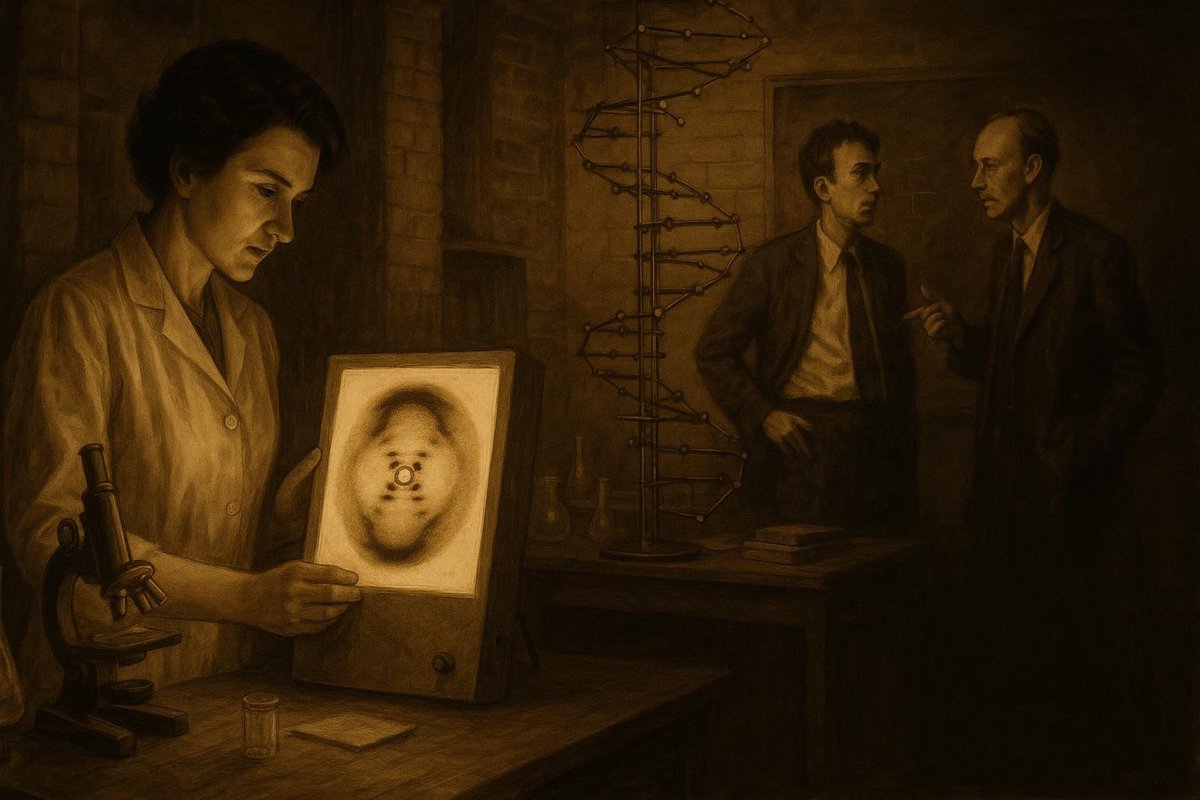
Imagine peering through a microscope, rendering the invisible visible, and unlocking the mysteries of life itself. That’s precisely what happened in the early 1950s when the structure of DNA was finally uncovered. Yet, does everyone receive the credit they deserve? Today, we delve into whether Rosalind Franklin’s pivotal contributions should redefine her role in the discovery of the DNA double helix.
Origin of DNA Structure Exploration
Before the double helix was ever a concept, DNA was a mysterious molecule with unknown significance. In the early 20th century, scientists were only beginning to scratch the surface of genetic material’s role in heredity.
- Scientists like Oswald Avery in the 1940s identified DNA as the carrier of genetic information, but its structure remained elusive.
- X-ray crystallography emerged as a promising technique to visualize molecular structures, setting the stage for breakthroughs.
This period was characterized by both excitement and uncertainty, as researchers around the world raced to unlock the secrets of DNA. The intellectual atmosphere was charged with curiosity, yet limited by the technological constraints of the time. How could one piece together an unseen puzzle?
Key Figures in the DNA Discovery
Enter James Watson and Francis Crick, whose names are synonymous with DNA’s double helix. Yet, their journey to the discovery was not a solitary one.
- Rosalind Franklin, working at King’s College London, produced critical X-ray diffraction images of DNA, notably Photo 51, which revealed key insights.
- Franklin’s colleague, Maurice Wilkins, also played a role, albeit controversially, in sharing her images with Watson and Crick.
The social and cultural dynamics of the time cannot be ignored. In an era when women in science often worked in the shadows, Franklin’s contributions were, unfortunately, underappreciated. Should history now re-evaluate her role?
The Turning Point: Photo 51
The turning point in the race to understand DNA’s structure came with Photo 51. This image, captured by Franklin, provided the missing piece of the puzzle.
- Watson, on seeing the image, reportedly had a “eureka” moment, recognizing the helical structure.
- This pivotal insight allowed Watson and Crick to build their model of the DNA double helix in 1953.
But was the use of Franklin’s work ethical? Scientists today often reflect on the importance of transparency and acknowledgment in collaborative research. As time goes on, many advocate for a more inclusive recognition of all contributors. Can we reshape our understanding of scientific credit?
Impact on the World: Beyond the Double Helix
The discovery of the DNA double helix has had profound implications on science and society. It’s not just about the structure but what it enabled.
- Genetic research has led to advances in medicine, forensics, and our understanding of evolution.
- Franklin’s work laid the groundwork for further discoveries, impacting fields from bioinformatics to synthetic biology.
Interestingly, the legacy of this discovery prompts ongoing discussions about ethical scientific practices and the recognition of overlooked contributors. As we continue to learn about DNA’s role in life, the story of its discovery reminds us of the importance of valuing every voice in the scientific community.
The discovery of the DNA double helix is more than a tale of scientific triumph; it’s a reflection of the human quest for understanding. As we honor the past, perhaps it’s time to acknowledge all who contributed and expand our narrative to include Rosalind Franklin, not just as a footnote but as a key figure.
Fuel Someone Else’s Curiosity
If this journey through the fascinating history of DNA has sparked your interest, why not share it with others? Encourage discussions, question assumptions, and perhaps inspire a new appreciation for the often-unseen figures behind scientific breakthroughs. The conversation doesn’t end here — it’s just the beginning.

Leave a Reply